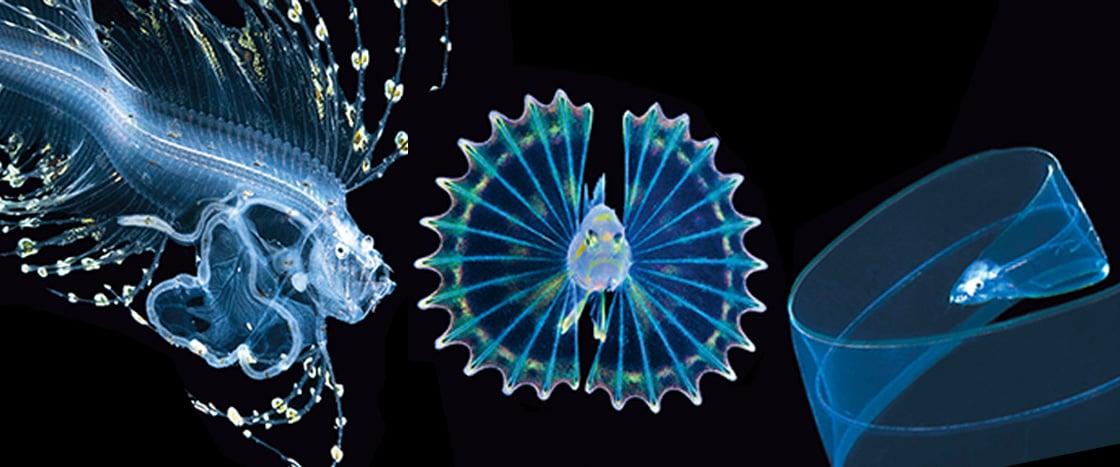These creatures may look ghostly, but they’re actually young forms of fish, called larvae. In real life, they’re just a few millimeters long! Scientists often study these and other zooplankton, or tiny ocean animals, by catching them in nets. But a modern technology called blackwater photography gives a clearer picture of zooplankton in the wild.
To capture these eye-catching images, photographers dive into the ocean at night. That’s when many zooplankton swim up to the top ocean layer to find food. During the day, they retreat to the darker layer below to escape predators (see “Daily Migration,” below).
Blackwater photographers use cameras that can light up the dark and zoom in on small objects. The pictures reveal how zooplankton behave in their natural habitat, says Ai Nonaka, a researcher at the National Museum of Natural History. That makes the images important to scientists.

